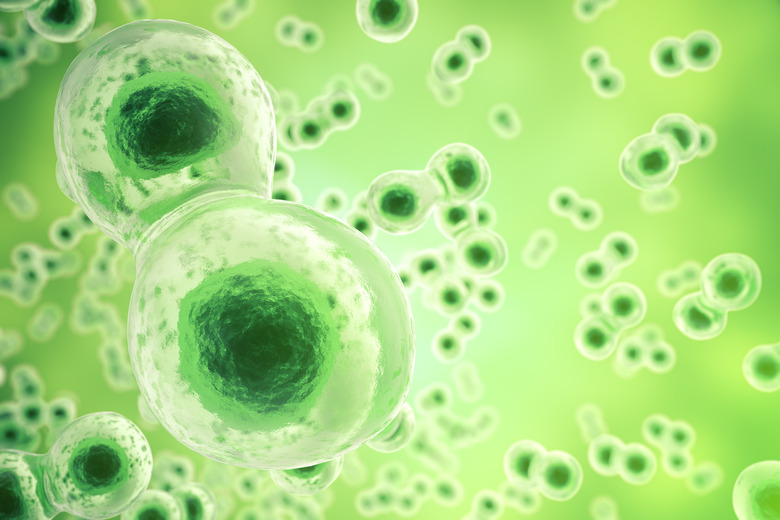Where Is Most Of The Mass Of An Atom Located?
Over 99.9 percent of an atom's mass resides in the nucleus. The protons and neutrons in the center of the atom are about 2,000 times heavier than the electrons orbiting around it. Because the electrons are so light by comparison, they represent only a tiny fraction of a percent of the atom's total weight.
TL;DR (Too Long; Didn't Read)
Most of the mass of an atom is located in the nucleus.
Masses of the Particles
Masses of the Particles
Individual atoms have extremely small masses, and it follows that the particles that make up an atom have even smaller masses. A proton, for example, weighs 1.673 x 10-24 g. The neutron is slightly heavier at 1.675 x 10-24 g. An electron is far lighter, at 9.11 x 10-28 g.
Particles: How Many and Where
Particles: How Many and Where
Electrically neutral atoms have an equal number of protons and electrons. The charge on each electron is the same amount as on the proton, though of opposite signs. Protons have a positive charge; electrons are negative. The number of neutrons is a bit tougher to define as it can be different even for atoms of the same element. For example, carbon-12 has six protons and six neutrons; the radioactive carbon-14 nucleus has six protons and eight neutrons. Atoms have most of their mass in the nucleus not only because protons and neutrons are heavier than electrons, but also because together, protons and neutrons outnumber electrons by roughly 2:1.
Masses of Isotopes
Masses of Isotopes
Atoms of the same element can have different numbers of neutrons. Chemists call these related atoms isotopes. The number of isotopes varies for each element. Tin is the isotope champ with 63, while hydrogen has the fewest – three. Chemists determine the mass of each isotope by counting the protons and neutrons. They ignore the electrons because their mass is so small by comparison. For convenience, chemists developed the atomic mass unit (AMU) for measuring atomic weight. It is defined as 1/12 of the mass of the carbon-12 atom, so the atomic mass of carbon-12 is 12. Because of the slight difference in the masses of the proton and neutron, as well as for other reasons, the atomic masses for most other elements and isotopes do not work out to whole numbers.
Average Atomic Mass
Average Atomic Mass
When you look up the atomic mass for an element on the periodic table, the number you see is the average for all of the element's isotopes. The average is adjusted for the relative abundance of each isotope. As a result, rare isotopes have a smaller effect, and common ones have a bigger effect on the average. For example, the average atomic mass listed for carbon is not exactly 12 but 12.01. The heavier isotopes such as carbon-13 and carbon-14 exist in tiny amounts that increase the average mass slightly.
Atomic Number
Atomic Number
For every element in the periodic table, the number on top of the element symbol is the atomic number. This is simply the number of protons for the element. Unlike atomic mass, atomic number is the same for every isotope and is always a whole number.
Cite This Article
MLA
Papiewski, John. "Where Is Most Of The Mass Of An Atom Located?" sciencing.com, https://www.sciencing.com/where-is-most-of-the-mass-of-an-atom-located-13710474/. 19 March 2018.
APA
Papiewski, John. (2018, March 19). Where Is Most Of The Mass Of An Atom Located?. sciencing.com. Retrieved from https://www.sciencing.com/where-is-most-of-the-mass-of-an-atom-located-13710474/
Chicago
Papiewski, John. Where Is Most Of The Mass Of An Atom Located? last modified March 24, 2022. https://www.sciencing.com/where-is-most-of-the-mass-of-an-atom-located-13710474/
